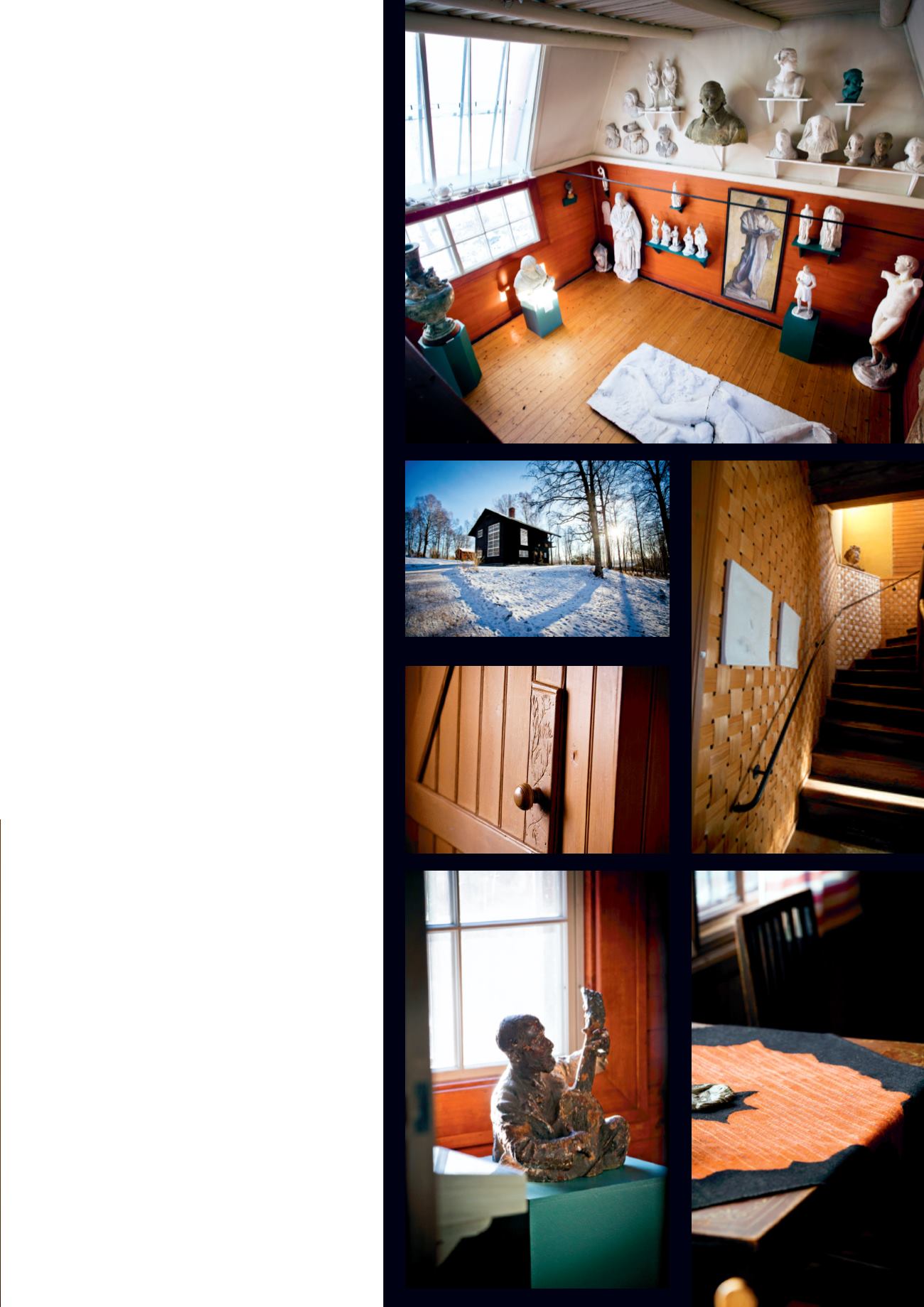
– In industrial society, artists were given
free rein. No one expected artists to be
normalised. They weren’t supposed to talk
about what they did; their work was to
speak for itself. In that respect I think the
role of the artist has been both exclusive
and slightly odd. If you were an artist
it was looked down upon if you made a
living outside of your art. Rather poor and
starved than working at a nursing home.
– It’s not like that today, for better
and for worse. It breeds new expression.
I feel that there’s more openness between
different genres, a crossing of boundaries
which leads to growth. At the same time
we need professional, trained artists. That’s
why I’ve implemented an exhibition fee so
that the artists here can afford to exhibit
their work.
The Rackstad Museum
is the place to
visit if you want to take in the constantly
growing collection of art and crafts that the
artists of the Racktad Colony left behind.
In addition, there are between twelve and
fifteen temporary exhibitions every year.
In the summer, you can also visit the artists’
home, Oppstuhage, and the summer studio.
– As a guest I also think that you should
take the opportunity to enjoy a nice soup
lunch or a coffee and homemade cake in
our café, Lena finishes. We also organise
various concerts, in cooperation with the
Ingesund University College of Music and
Arvika’s rich music scene.
– Nearly all of the artists who were part
of the Rackstad Colony played the violin
or other instruments. Art, music, food and
enounters go together. They create quality
of life, energy and growth.
At the Rackstad Museum you will also find Christian
Eriksson’s villa and studio, Oppstuhage, which he
built for himself and his wife Jeanne Tramcourt when
they returned to Sweden from France. Both the
artist’s home and the summer studio are open to
visitors in the summer.
113


